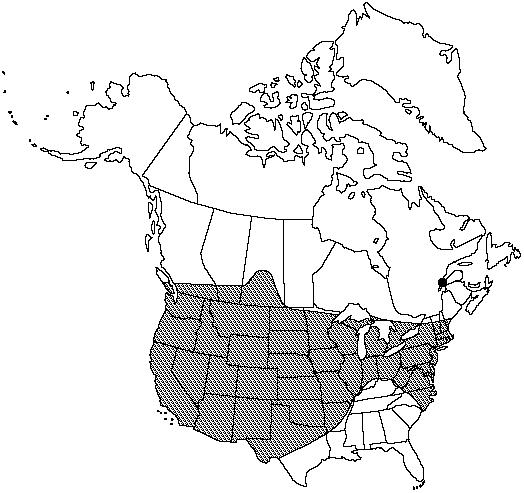Equisetum ×ferrissii
Fern Bull. 12: 22. 1904.
Aerial stems having basal part persisting over winter, unbranched, 20–180 cm; lines of stomates single; ridges 14–32. Sheaths elongate, 7–17 × 3–12 mm, becoming dark-girdled with age; teeth 14–32, articulate and promptly shed or persistent. Cone apex pointed; spores white, misshapen.
Phenology: Cones maturing in late spring–early summer but spores not shed.
Habitat: Moist lakeshores, riverbanks, roadsides, prairies
Elevation: 0–2500 m
Distribution

Alta., B.C., Ont., Que., Sask., Ariz., Ark., Calif., Colo., Conn., Del., D.C., Idaho, Ill., Ind., Iowa, Kans., Maine, Md., Mass., Mich., Minn., Mo., Mont., Nebr., Nev., N.H., N.J., N.Mex., N.Y., N.C., N.Dak., Ohio, Okla., Oreg., Pa., R.I., S.Dak., Tex., Utah, Vt., Va., Wash., W.Va., Wis., Wyo., n Mexico including Baja California
Discussion
The hybrid between Equisetum hyemale and E. laevigatum, E. × ferrissii, was mistaken for E. laevigatum by Schaffner and some subsequent authors. Although sterile, it exists outside the range of E. laevigatum, and apparently it is dispersed vegetatively (R.L. Hauke 1963). Perhaps it has persisted in some areas from a time when the parents were both there. Equisetum × ferrissii has been reported from Maine, New Hampshire, Rhode Island, South Dakota, and Vermont, but I have not seen specimens from those states.
Selected References
None.